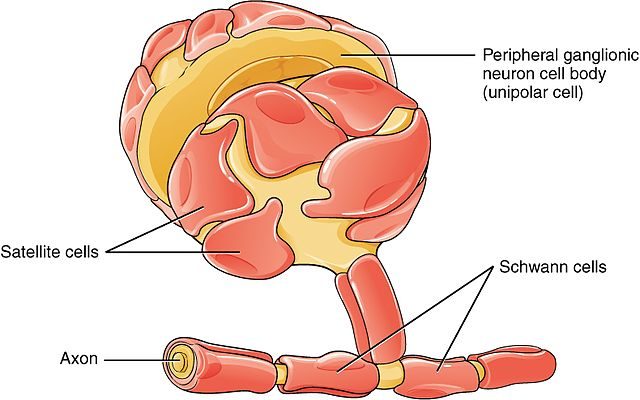Kidney Modeling with Kidney Organoids Derived from Human Pluripotent Stem Cells
Stem cells are a valuable tool for kidney disease modeling as well as experimental regenerative medicine and drug screening. There are more than twenty different cell types in the mature kidney, which adds to the complexity of the model, but also provides the opportunity to study multiple lineage-specific conditions that promote differentiation.
The vertebrate kidney is a dynamic organ and is critical to homeostasis. Its functions include fluid/electrolyte balance, blood pressure regulation, and waste filtration, all of which are essential for survival. Chronic disease states, such as diabetes and hypertension, can lead to irreversible organ damage and end-stage renal disease. Viable treatment options exist for kidney disease, such as dialysis and/or kidney transplantation. However, a shortage of transplantable organs and the clinical challenges inherent in long-term dialysis make a compelling case for alternative treatments, including stem cell therapies.1,2
Developing Kidney Organoids
Human pluripotent stem cells (hPSCs) can develop into kidney organoids in approximately twenty-five days under very defined culture conditions.3 Thawed HSPCs begin the differentiation process by growing in conditioned medium from mouse embryonic fibroblasts (MEFs), consisting of DMEM/F12 with non-essential amino acids, a serum substitute, 2-mercaptoethanol and supplementation with 10 ng/ml bFGF. Once hPSCs reach high confluency, they are moved to a Matrigel-coated plate and grow in MEF-conditioned medium supplemented with 10 ng/ml bFGF for two days, with daily medium changes. At this point, the cells are ready for induction to intermediate mesoderm. Mesodermal differentiation is achieved by a four-day incubation with 8 µM CHIR99021, a potent inhibitor of glycogen synthase kinase 3 (GSK3) in formulated medium. The mesodermal differentiation phase typically lasts four days.
After the CHIR99021 treatment, mesodermal-stage cells continue to grow in APEL medium, supplemented with 200 ng/mL FGF9 and 1 µg/mL heparin for approximately three days. At this point, the cells are ready for the three-dimensional (organoid) assembly. Each kidney organoid starts with seeding of 50,000 cells, by centrifugation of trypsin-dissociated cells in microfuge tubes. Cultured organoids grow for five days in APEL medium supplemented with 200 ng/mL FGF9 and 1 µg/mL heparin. The FGF9 and heparin are removed from the medium after five days and the kidney organoids continue to grow for an additional 6-13 days in APEL medium alone. The resulting kidney organoids measure 3-5 mm in diameter, expressing markers and morphologies consistent with glomeruli, proximal tubules, distal tubules, collecting ducts, endothelial networks and renal interstitial cells.
Another method to generate three-dimensional kidney cell structures from hPSCs was described by Yoshimura.4 The 14-day Yoshimura method begins with iPSCs plated on Day 0 with 0.5 ng/ml BMP4 and 10 µM Y27632, followed by 1 ng/ml Activin and 20 ng/ml FGF2 on Day 1. On Day 3, the cells receive 1ng/ml BMP4 and 10 µM CHIR99021. On Day 5, 10 µM Y27632 supplements the BMP4 and CHIR99021. By Day 9, as the developing cells become mesoderm, they receive 10 ng/ml Activin, 3ng/ml BMP4, 3 µM CHIR99021, 0.1 µM retinoic acid and 10 µM Y27632. The last cocktail on Day 11 includes 1 µM CHIR99021, 5 ng/ml FGF9 and 10 µM Y27632. By Day 14, the treated cells exist in the form of spheres that express Osr1, Wt1, Hox11, Pax2 and Six2, all characteristic of nephron progenitor cells.
Kidney organoids-based studies hold great theoretical and practical potential, leading to the establishment of various other methods for generating kidney organoids.2
Tips for Transitioning from hPSCs to Kidney Organoids
In addition to these experimental details, there are some small tips to help ensure a successful transition from hPSCs to kidney organoids:
- Growth factors need to be fresh to ensure potency,
- hPSCs are very sensitive and should be pipetted sparingly and gently,
- Handle Matrigel on ice. Matrigel solidifies at room temperature and works best when tubes and pipette tips are pre-chilled to ensure a liquid state during transfer.
- To minimize variation, hPSCs should be thawed from a frozen stock specifically for each experiment and not from a continuously maintained cell culture pool.
“Kidneys in a Dish”
In summary, under strict differentiating conditions, human pluripotent stem cells can assemble into three-dimensional structures that express markers and exhibit cytoarchitecture representative of kidney cell types. The development of these “kidneys in a dish” will facilitate disease modeling, drug screening, and the potential development of novel stem cell replacement therapies for debilitating renal diseases.
References
- Takasato M, Er PX, Chiu HS, Maier B, Baillie GJ, Ferguson C, Parton RG, Wolvetang EJ, Roost MS, Chuva de Sousa Lopes SM, Little MH. Kidney organoids from human iPS cells contain multiple lineages and model human nephrogenesis. Nature. 2015 Oct 22;526(7574):564-8. doi: 10.1038/nature15695. Epub 2015 Oct 7.
- Morizane R, Bonventre JV. Kidney Organoids: A Translational Journey. Trends Mol Med.2017 Feb 7 23(3):246-263. doi: 10.1016/j.molmed.2017.01.001
- Takasato M, Little MH. Making a Kidney Organoid Using the Directed Differentiation of Human Pluripotent Stem Cells. Methods Mol Biol. 2017;1597:195-206. doi: 10.1007/978-1-4939-6949-4_14.
- Yoshimura Y, Taguchi A, Nishinakamura R. Generation of a Three-Dimensional Kidney Structure from Pluripotent Stem Cells. Methods Mol Biol. 2017;1597:179-193. doi: 10.1007/978-1-4939-6949-4_13.






